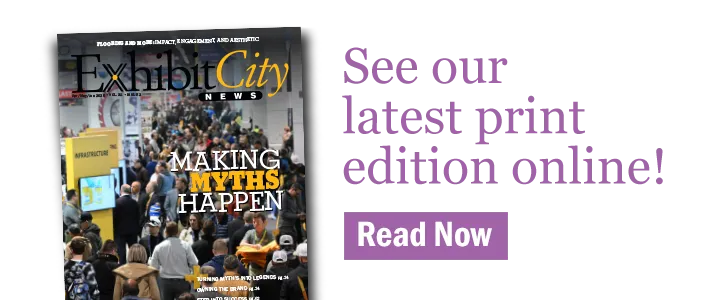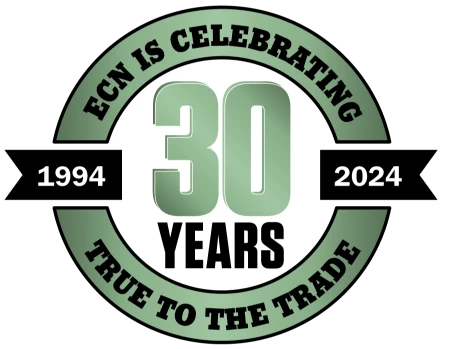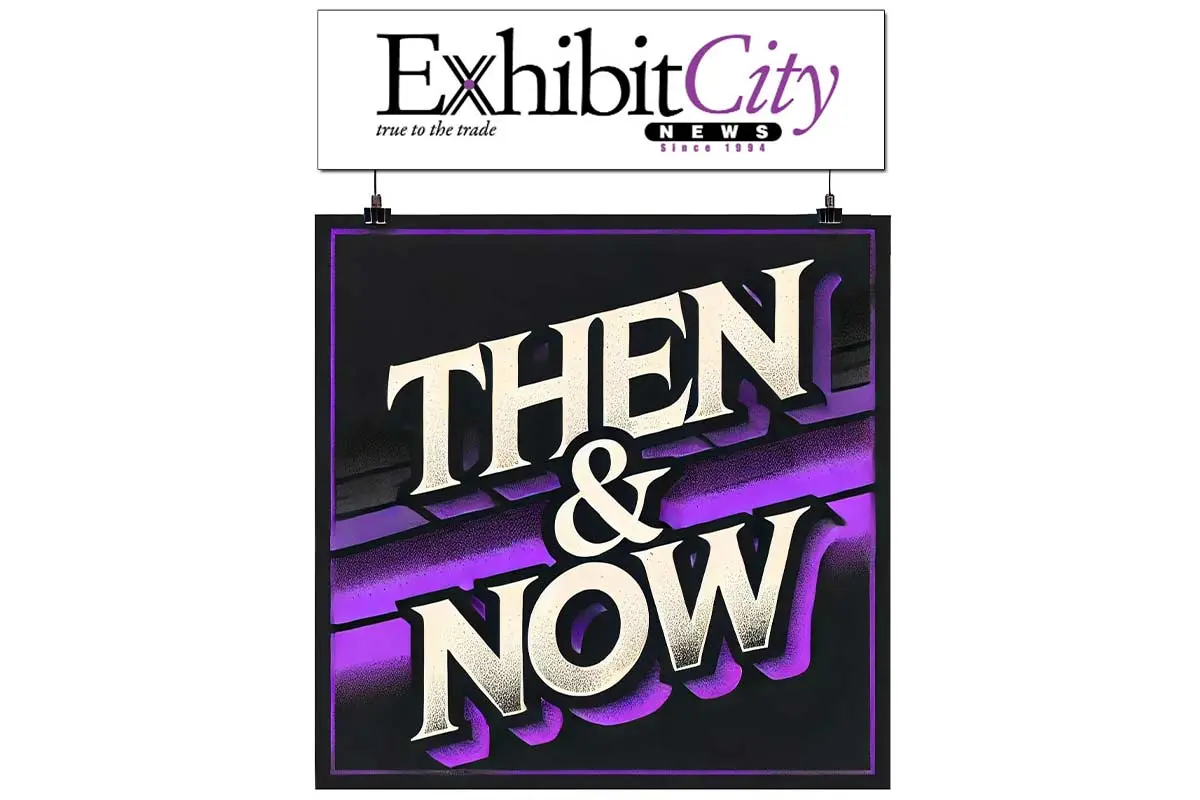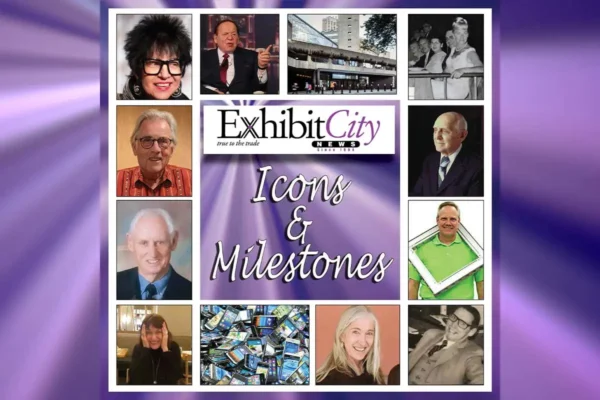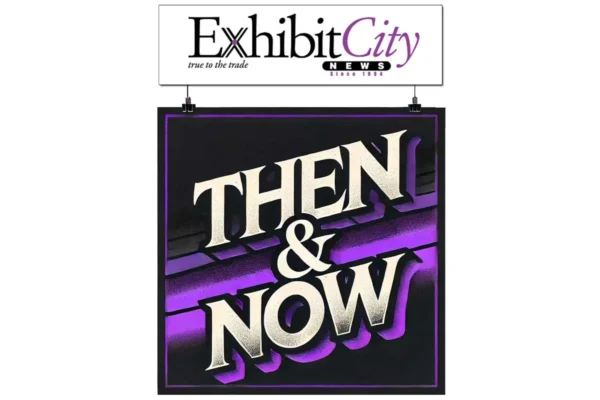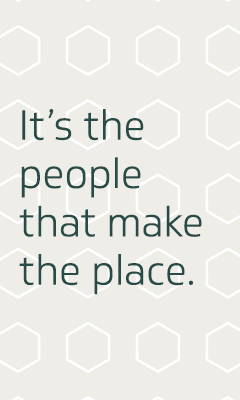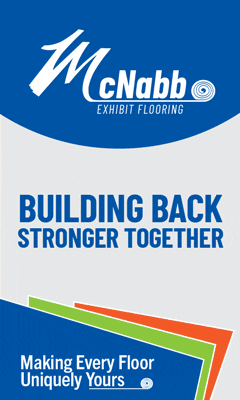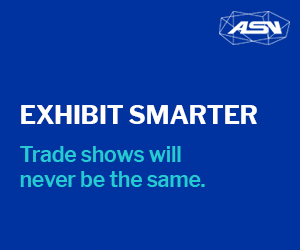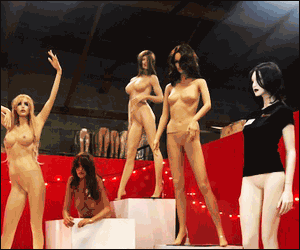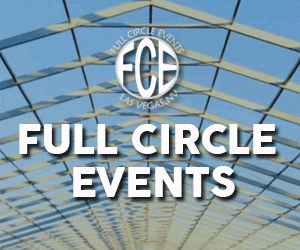About the Then & Now Content Series
The Then & Now series written by Kerstan Szczepanski was originally published in the Exhibit City News 30 Year Anniversary book. The series is a collection of aspects of the show floor that have changed over the last 30 years. The content covers an overview of the last 30 years and is not intended to be an insight into every change, but a broad overview. Many things have changed over the last 30 years and will continue to change.
To see the original layout of this article, please visit page 157 of the 30 Year Anniversary book.
Graphics From Simple to Spectacular
In the world of tradeshows, first impressions are everything. Over the past 30 years, the graphics that grab attention and deliver a brand’s message have transformed dramatically. From basic logos to immersive digital displays, the evolution of tradeshow graphics is a story of tech innovation, shifting design trends, and the increasing demand for strong brand impact. Let’s take a visual trip through time and see how tradeshow graphics have evolved from 1994 to today.
The 1990s: When Less Was More
Imagine a tradeshow floor in the mid-90s: a sea of booths with simple logos and straightforward text. This was the era of traditional screen and offset printing, which was labor-intensive, limited in color, but reliable.
Back then, design was all about simplicity. Big, bold company names and clear product information dominated. There were no flashy visuals—just communication. Graphics were printed on heavy vinyl, fabric, or laminated paper, making them durable but not exactly easy to carry around (or good for the planet).
The 2000s: Digital Printing Sparks Creativity
As the 2000s rolled in, digital printing changed the game. Suddenly, high-res, full-color graphics weren’t just possible—they were affordable. This opened the door for creativity, allowing exhibitors to push boundaries with detailed, eye-catching designs that had been out of reach.
With digital printing came a shift in materials, too. Lightweight fabrics, PVC, and foam board became popular, making setups easier and less of a hassle. Booths evolved from functional spaces to branded showcases, featuring complex imagery, subtle gradients, and large, impactful visuals.
The 2010s: Stepping Into 3D
By the 2010s, tradeshow graphics were stepping into the third dimension. 3D designs, textured materials, and layered visuals made booths pop and pulled attendees into a brand’s world.
But the real game-changer? Interactivity. Touchscreens, motion sensors, and augmented reality features turned static displays into dynamic experiences. Attendees could now interact with graphics, creating personalized and unforgettable brand moments.
Meanwhile, the push for sustainability was gaining steam. Eco-friendly inks, recyclable materials, and modular graphics that could be reused show after show became the norm. Spectacular didn’t have to mean wasteful.
The 2020s: The Digital, Data-Driven Future
Today, tradeshow floors look radically different. Digital displays and LED screens take center stage, featuring animated content, videos, and real-time data. The flexibility is unmatched—exhibitors can update content on the fly to keep things fresh and relevant.
But the real magic happens behind the scenes. Graphics are often personalized in real-time, using data analytics and AI to tailor content to the audience interacting with the display. It’s personalization like never before.
Sustainability is still front and center. More graphics are printed on biodegradable or recycled materials, while digital displays help reduce printing (although they come with their environmental footprint). Design-wise, less is more once again — but with a modern twist. Minimalist styles, bold typography, and sharp brand colors are key to cutting through the visual noise of a crowded tradeshow environment.
Here’s what’s been behind the graphics revolution:
Technology: From digital printing to interactive displays, new tech has constantly expanded what’s possible with tradeshow graphics.
Sustainability: Growing eco-consciousness has pushed the industry towards greener materials and methods.
Branding and Engagement: The need to create memorable brand experiences has driven the move toward more dynamic, impactful visuals.
Customization: Personalized marketing has led to more adaptive, audience-tailored graphic solutions.
From basic logos to spectacular digital experiences, the graphics journey highlights not just changes in technology but in how brands connect with their audiences.



